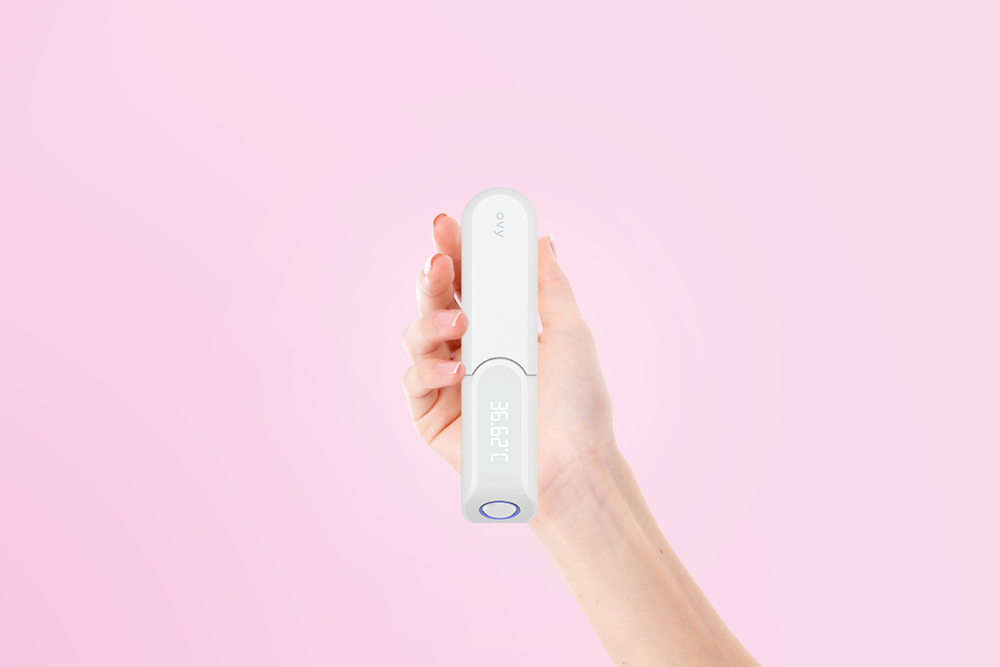Key Takeaways
- Das natürliche Auf uns Ab deiner Hormone im Laufe des Zyklus hat starke Auswirkungen auf deinen Körper.
- Wenn du dein Training an deine Zyklusphase anpasst, kannst du optimale Trainingsergebnisse erzielen.
- Im Artikel erfährst du, welche Art von Training wann am besten funktioniert.
A contribution in collaboration with KickAss Sports, by Imke Oelerich.
Why does the body respond differently to training stimuli at certain times? Hormonal cycle fluctuations explain why the same workout can feel easy on some days and hard on others.
In both endurance and strength training, these hormonal fluctuations can be used to your advantage. Training content and nutrition strategies can be planned so that the hormonal mechanisms support the purpose and goals of training sessions as well as recovery. To do this, it is important to understand how the menstrual cycle works and the role the hormones involved play.
These hormones influence your training
The menstrual cycle is controlled by the interaction of the brain and reproductive organs. Five hormones play a key role: gonadotropin-releasing hormone (GnRH), luteinizing hormone (LH), follicle-stimulating hormone (FSH), estrogen, and progesterone. Kisspeptins in the hypothalamus trigger the release of GnRH, which signals the pituitary gland to secrete FSH and LH into the bloodstream.
The phases of the menstrual cycle
Phase 1
The first phase of the menstrual cycle is called the early follicular phase and begins on the first day of bleeding. Hormone levels of FSH, LH, estrogen, and progesterone are at their lowest during this phase. Basal body temperature is also comparatively low. Individual variations are normal and can be tracked through regular measurement.
How should I train?
During your period, you should keep training intensity relatively low. Extended stretching and yoga routines are ideal. If you decide to do high-intensity interval training (HIIT) during this phase, it should last no longer than five minutes.
Phase 2
Shortly after bleeding ends (day 4–6), the second phase, the late follicular phase, begins. FSH stimulates the development of a new egg cell in a follicle. Estrogen is produced in the walls of the follicle. As the follicle grows toward ovulation, estrogen levels rise sharply. This spike signals the pituitary gland to release LH, which then triggers ovulation. The uterine lining also begins to build up. Basal body temperature drops slightly before ovulation and then rises afterward, remaining elevated until the next period.
How should I train?
In the early and late follicular phases (phases 1 and 2), hormonal influences on performance are low to moderately positive for intense training. Muscle growth occurs more effectively, recovery is faster, and carbohydrates are better utilized for energy. This is the best time for high-intensity training in both endurance and strength disciplines. The greatest performance gains in high-intensity training can be achieved during this phase.
Phase 3
The third phase, the early luteal phase, begins right after ovulation. The follicle is transformed into a gland called the corpus luteum, which produces progesterone. This phase is characterized by a rise in progesterone, a dip in estrogen, and then a slight rise in estrogen again. The uterine lining continues to thicken, with added blood vessels and glycogen-rich secretions to prepare for possible implantation. This tissue-building process requires energy.
How should I train?
In the early luteal phase, the body is efficient at using free fatty acids for energy, making it a good time for longer, steady-state workouts at submaximal intensities. In strength training, descending sets and plyometric exercises are effective. Adequate carbohydrate intake, sufficient fluids during training, and enough protein—especially after workouts—are essential.
Phase 4
The fourth phase, the late luteal phase, begins with the degeneration of the corpus luteum if no fertilization occurs. Estrogen and progesterone levels drop sharply, as does basal body temperature. The cycle then starts over with the shedding of the uterine lining, leading to menstruation.
How should I train?
In the late luteal phase, training intensity should be significantly reduced. This is a good time to focus on technique and functional strength exercises.
The impact of estrogen and progesterone on athletic performance
Estrogen and progesterone do not remain confined to the reproductive system; they circulate throughout the body, affecting many processes. They influence how we respond to training stimuli, how we adapt and recover, and how we metabolize and use nutrients.
The following effects of estrogen and progesterone influence athletic performance:
Estrogen:
-
Promotes fluid retention, often perceived as bloating
-
Reduces blood plasma volume
-
Increases insulin sensitivity
-
Supports carbohydrate storage
-
Promotes the use of free fatty acids
-
Stimulates muscle protein synthesis, providing an anabolic effect
-
Improves bone density
-
Influences serotonin levels in the brain
Progesterone:
-
Raises basal body temperature
-
Increases sweating, but with a delayed onset
-
Impairs muscle protein synthesis, producing a catabolic effect
-
Increases breathing rate
-
Strengthens bone tissue
-
Reduces insulin sensitivity
In a healthy menstrual cycle, estrogen and progesterone never act in isolation. They sometimes work together, but often in opposition—for example, estrogen’s anabolic effect versus progesterone’s catabolic effect. What matters most is the ratio between estrogen and progesterone.
The optimal training program for each cycle phase at a glance
What does this mean for training planning if we want to factor in the interplay of the different hormones in our cycle?
Endurance training
-
Phase 1: HIIT, 3–5 minutes
-
Phase 2: Longer, intense intervals
-
Phase 3: Steady-state, endurance-based training
-
Phase 4: Technique work, mobility, and recovery
Strength training
-
Phase 1: Heavy weights, low reps
-
Phase 2: Heavy weights, EMOM (“every minute on the minute”)
-
Phase 3: Plyometric training, descending sets
-
Phase 4: Functional movement training
Want to get to know your performance across the cycle?
With the Ovy Bluetooth Basal Thermometer, you can measure your waking temperature and transfer it automatically via Bluetooth to the Ovy App. In the app, you can log your activity and note your performance during each cycle phase.
This blog post was created in collaboration with KickAss Sports.
Medically Reviewed
This text was created by medical editors on the basis of specialist medical literature and current studies. Our aim is to work scientifically, identify sources and regularly check that the content is up to date.
References & Literature
- Delgaard, L.B., Dalgas, U., Andersen, J.L., Rossen, N.B., Møller, A.B., Stødkilde-Jørgensen, H., Jørgensen, J.O., Kovanen, V., Couppe, C., Langberg, H., Kjær, M., Hansen, M. Influence of Oral Contraceptive Use on Adaptations to Resistance Training. Frontiers in Physiology. 2019;(10)824. Verfügbar unter: https://doi.org/10.3389/fphys.2019.00824
- Cea-Soriano, L., García Rodríguez, L., Machlitt, A., & Wallander, M. A. Use of prescription contraceptive methods in the UK general population: A primary care study. BJOG: An International Journal of Obstetrics & Gynaecology. 2014;121(1), 53–61. Verfügbar unter: 10.1111/1471-0528.12465
- Elliott-Sale, K. J., Smith, S., Bacon, J., Clayton, D., McPhilimey, M., Goutianos, G., Sale, C. Examining the role of oral contraceptive users as an experimental and/or control group in athletic performance studies. Contraception. 2013;88(3), 408-412. Verfügbar unter: 10.1016/j.contraception.2012.11.023
- Lebrun, C. M., Petit, M. A., McKenzie, D. C., Taunton, J. E., & Prior, J. C. Decreased maximal aerobic capacity with use of a triphasic oral contraceptive in highly active women: A randomised controlled trial. British Journal of Sports Medicine. 2003; 37(4), 315–320. Verfügbar unter: 10.1136/bjsm.37.4.315
- Wikstrom-Frisen, L., Boraxbekk, C. J., & Henriksson-Larsen, K. Effects on power, strength and lean body mass of menstrual/oral contraceptive cycle based resistance training. J Sports Med Phys Fitness. 2017; 57(1-2), 43-52. Verfügbar unter: 10.23736/S0022-4707.16.05848-5
- Sabina Cauci , Cinzia Buligan, Micaela Marangone and Maria Pia Francescato. Oxidative Stress in Female Athletes Using Combined Oral Contraceptives Sports Medicine. 2016; 2:40. Verfügbar unter: 10.1186/s40798-016-0064-x
- Dr. Stacy Sims – ROAR: How to Match Your Food and Fitness to Your Unique Female Physiology for Optimum Performance, Great Health, and a Strong, Lean Body for Life.
You might also be interested in these articles
2 Min. Lesezeit
4 Min. Lesezeit





